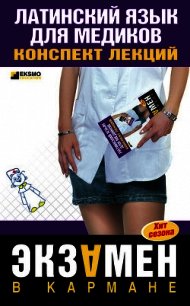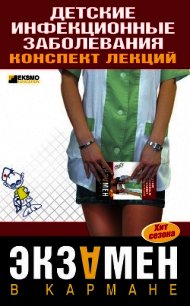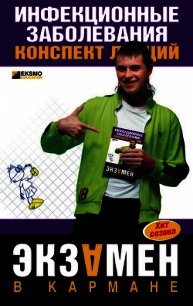Английский язык для медиков: конспект лекций - Беликова Елена (книги хорошего качества TXT) 📗
In the man the food in the mouth is masticated, that is to say it is bitten and broken up by the teeth and rolled into the bolus by the tongue.
The degree of chewing which is possible depends on the jaw articulation, the latter depending on the food. Mastication is voluntary, but it may be reflex, each closure of the jaw acting as a stimulus for their reopening.
After mastication the bolus is swallowed: the swallowing starts as a voluntary movement, but its accomplishment is a chain of reflexes involving the movement of the food by peristalsis, the closure of the nasal and tracheal openings, and the cessation of respiration. Cranial nerves V, IX, and XII are involved.
Peristalsis is a type of muscular contraction characteristic of the gut and consists in waves of contraction, these running along the muscles, both circular and longitudinal, towards the anus.
If the food is fluid it enters the stomach six seconds after the beginning of the act, but If It is solid it takes much long er, up to fifteen minutes, to pass down the esophagus.
In the stomach the food is thoroughly mixed by the series of contractions, three or four a minute, the contraction waves pass ing from the middle of the stomach to the pylorus. These tend to drive the food in the same direction, but the pylorus being closed, there is axial reflex, owing to which the food is well mixed. After a time – a bout a minute when water has been swallowed – the pylorus relaxes at each wave, allowing some of the stomach contents to enter the duodenum. Fat stays in the stomach longer than carbo hydrate, but all food leaves generally in three or four hours. In the small intestine the food continues to be moved by peristalsis, the latter controlled by the deep nerve plexus. The small intestine undergoes segmentation movements, the food contents being thoroughly mired The wall becomes constricted into a number of segments and then about five seconds later the constrictions disappear, there being another set exactly out of phase with the first. The large intestine undergoes infrequent powerful contractions, food having entered it. From the large intestine the food enters the rectum.
New words
fuels – топливо
carbohydrates – углеводы
fats – жиры
proteins – белки
diet – диета
principal source – основной источник
energy – энергия
glucose – глюкоза
immediate – непосредственный
use – использование
is converted – преобразован
glycogen – гликоген
stored – сохраненный
liver – печень
sugar – сахар
adipose – животный жир
excess – избыток
utilized – используемый
empty – пустой
essential – основа
growth – рост
rebuilding – восстановление
acids – кислоты
amino acids – аминокислоты
contractions – сокращения
pylorus – пилорус
direction – направление
axial reflex – осевое отражение
Past Continuous Tense (Past Progressive Tense) (действие в процессе, совершалось в определенный момент или протекало в течение четко ограниченного периода времени в прошлом).
Спряжение глагола to work в Past Continuous Tense Таблица 12


Раскройте скобки, употребляя глголы в Present Continuous или Past Continuous.
1. I (to write) an English exercise now.
2. I (to write) an English exercise at this time yesterday.
3. My little sister (to sleep) now.
4 My little sister (to sleep) at this time yesterday.
5. My friends (not to do) their homework now. They (to play) volley-ball.
6. My friends (not to do) their homework at seven o'clock yesterday. They (to play) volley-ball.
7. You (to eat) ice-cream now?
8. You (to eat) ice-cream when I rang you up yesterday?
9. What your father (to do) now?
10. What your father (to do) from eight till nine yesterday?
11. Why she (to cry) now?
12. Why she (to cry) when I saw her yesterday?
13. She (to read) the whole evening yesterday.
14. She (not to read) now.
15. Now she (to go) to school.
16. What you (to do) now? – I (to drink) tea.
17. You (to drink) tea at this time yesterday? – No, I (not to drink) tea at this time yesterday, I (to eat) a banana.
18. My sister is fond of reading. She (to read) the whole-evening yesterday, and now she (to read) again.
19. Look! My cat (to play) with a ball.
20. When I went out into the garden, the sun (to shine) and birds (to sing) in the trees.
Answer the questions.
1. What are the fuels of the body?
2. What is the principal source of energy in most diets?
3. Where are the carbohydrates absorbed?
4. What is converted into glycogen and stored in the liver?
5. What makes up the second largest source of energy in most diets?
6. Where pats are stored?
7. When is the stored fat utilized?
8. What are proteins essential for?
9. In what are proteins first broken down?
10. What is going on with the food in the stomach?
Make the sentences of your own using the new words (10 sentences). Find the verb to be in the text. Explain why it is used in such a way?
ЛЕКЦИЯ № 41. The act of swallowing
The act of swallowing is divided into three stages.
The first stage is under voluntary control. The food which has been transformed into a soft, mass by the act of mastication is brought into position upon the root of the tongue, and by the action of the lingual muscles is rolled backwards towards the base of the tongue.
The second stage is brief and is occupied in guiding the food through the pharynx and past the openings that lead from it. The muscular movements during this stage are purely reflex in nature. The third stage involves the passage of the food down the eso phagus. The food is seized by peristaltic wave which, traveling along the esophagus, carries the material before it into the stomach. The cardiac sphincter which guards the lower end of the esophagus and which at other times is kept tonically closed re laxes upon the approach of the bolus which is then swept into the stomach by the wave of constriction which follows.
Shape of the stomach
The normal position of the empty human stomach is not hori zon-tal, as used to be thought before the development of rentgenology. This method of examination has revealed the stomach to be either somewhat J-shaped of comparable in outline to a reversed L. The majority of normal stomachs are J-shaped. In the J-shaped type the pylorus lies at a higher level than the lowest part of the greater curvature and the body of the stomach is nearly verti cal.
The stomach docs not empty itself by gravity, but through the contraction of its muscular wall like any other part of the diges tive tube, of which it is merely a segment.
Gastric motility shows great individual variation; in some types of stomach the wave travels very rapidly, completing its journey in from 10 to 15 seconds. In others the wave takes 30 seconds or go to pass from its origin to the pylorus. The slow waves are the more common.
IRON in the body.
It is accepted that the total amount of iron in the body is between 2 and 5 g., varying with body-weight and hemoglobin level; about two-thirds of this is in the form of hemoglobin and about 30% is storage iron; iron in myоglobin and enzymes makes up the small remaining fraction together with iron in transport, which is only 0,12%. There is a big difference between the sexes: in the adult male the total iron is about 50 mg. per kg. body-weight. But in the adult female the figure is only 35 mg. per kg., mainly be cause the normal blood-level of hemoglobin is lower than in the male. Iron exists in the body mainly in two forms: firstly, as heme in hemoglobin, and cytochrome concerned with the utilization of oxygen; and secondly, bound to a protein without heme formation, as storage and transport iron. Iron in the body has a very rapid turnover, since some 3 million red blood cells are broken down per second and the greater part of the iron released is returned to the bone marrow and re-formed into fresh hemoglobin; some 6,3 g. of hemoglobin containing 21 mg. of iron is handled this way every 24 hours.




